Lodz Ghetto
On September 8, 1939, the German army entered Lodz and shortly thereafter anti-Jewish laws were implemented which affected the city’s approximately 230,000 Jews. Lodz was located in Warthegau district and was incorporated into the German empire. The germans changed the city’s name to Litzmannstadt to honor the german general, Karl Litzmann, who conquered the city during First World War. The anti-Jewish laws imposed against Polish Jews were more restrictive than those applied in Germany. In October 1939, the chief of police in Lodz announced that all Jewish businesses clearly must show they are Jewish and not aryan. By doing so, the aryanisation of Jewish businesses could go faster. Aryanisation was a 1938 law that allowed Jewish business to be taken over by non-Jews.
In November, 1939, all Jews in Lodz, regardless of age, must wear a yellow armband on their right arm as identification when they were outdoors. In December that year, Warthegaus political leader, Arthur Greiser, introduced a law that the armband be replaced with a visible yellow star of David on their clothes, both front and back. Jews were also not allowed to stay outdoors between 17:00 and 08:00. This was the first time that the Jews were ordered to carry a form of identification, but it was a local decision. Not until October 1, 1941, that RSHA’s head Heydrich introduced a law that all Jews from the age of six in the German empire should wear some kind of identification when outside their homes.
Shortly after the occupation, the Nazis began with spontaneous pogroms and persecuting influential Jews. They were beaten, murdered, imprisoned or deported to concentration camps. The Nazis also began random arrests of Jews on the street, forcing them to work in German industries. Therefore, the Jews began to hide in order to escape spontaneous arrests. In order to protect the Jews from arrests, the jewish self-government offered a cooperation with the german occupying power to provide labor. The Germans accepted this, and October 7, a Jewish labour recruitment office was set up. Already in September 1939, Heydrich had written in a memorandum that special areas would be built in the occupied cities where the Jewish population would be housed and separated from the rest of the population.
In Lodz, such an area (getto) was established in February 1940 in the northern part of the city. Lodz’s Jewish population then amounted about 165,000 and they were immediately ordered to move there and the population living there was ordered to move out. Thousands of Jews had fled Lodz. At the end of April 1940, this area was isolated from the rest of the city. It was forbidden to leave or visit the ghetto without special permission. Nearby houses were demolished to make it easier to guard the ghetto and since the ghetto lacked sewage, it was quite easy for the Germans to guard the ghetto. The absence of sewage was not only of sanitary significance, but it also made it difficult to smuggle goods between the ghetto and the outside world. Beginning in the fall of 1941, not only Polish Jews were deported to the ghetto. Inside the ghetto there was also a camp for gypsies (Zigeunerlager) and for Polish children (Polenjugendverwahrlager).
In 1939, Morderchaj Rumkowski was appointed chief of the Jewish self-government (Jewish council). Rumkowski was given some freedom in exchange for his cooperation with the Germans and he remained as head of the ghetto until the final liquidation of the ghetto in summer 1944. Rumkowski fully cooperated with the Germans and his role has been criticized. The Nazis had, however, no plans to spare Rumkowski’s life. When the ghetto was finally liquidated in August, 1944, his family, like others, was sent to the gas chambers at Auschwitz. The lack of food and medicine caused diseases such as typhus, spot fever, tuberculosis, etc., to spread unhindered and thousands Jews in the ghetto died. Those who died in the ghetto were buried at the Jewish cemetery (Burial site) in the ghetto.
In mid-January 1942, the Nazis began deporting unproductive and superfluous Jews to the newly established extermination camp in Chelmno, about 100 kilometres west of Lodz. Those who were to be deported to Chelmno or other camps were forced to march to the nearby Radegast station, just outside the ghetto. This first major deportation went on til May, 1942. During this period, almost 60,000 Jews were murdered in Chelmno, of which about 11,000 came from western European countries. After this murderous action, the ghetto was turned into a labor camp.
Because the ghetto was turned into a labor camp it was not liquidated as most other ghettos in 1943. But it was just a matter of time before the Nazis begun to deport the Jews agains. Deportations to Chelmno resumed in June, 1944, after SS chief Heinrich Himmler ordered the final liquidation of the ghetto. During this second murder operation, Jews from Lodz were also deported to Auschwitz. During a month in June and July, more than 7,000 Jews were deported to Chelmno and murdered. The deportations ended a short period after the minister of armaments Albert Speer, appealed to Hitler that the Jews were needed in the war industry. In August 1944, the ghetto was emptied and hundreds of prisoners were forced to clean up the former ghetto.
Current status: Partly preserved/demolished with monument (2009).
Address: Aleja Chryzantem, 91-001 Lódz (Jewish Cemetery).
Get there: Car.
Follow up in books: Gilbert, Martin: The Holocaust: A History of the Jews of Europe During the Second World War (1987).
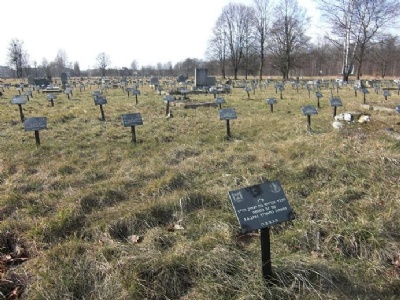
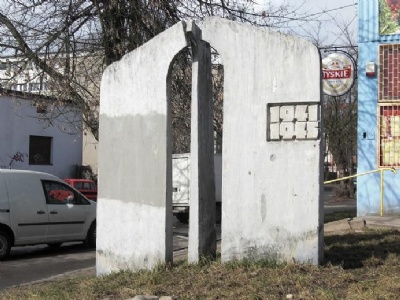
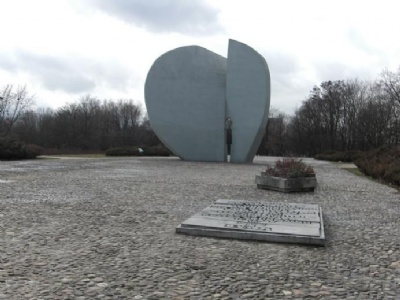
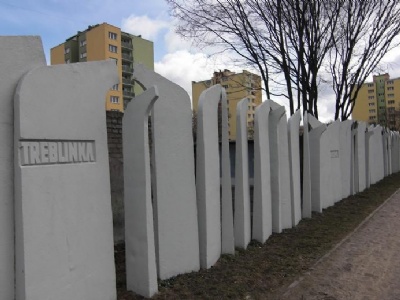
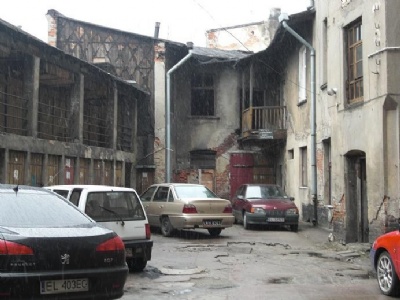
There are surprisingly many houses left from the days of the ghetto. The Jewish cemetery is also left with a ”ghetto field” where the people who died or were murdered in the ghetto are buried. Several monuments are erected around the ghetto.